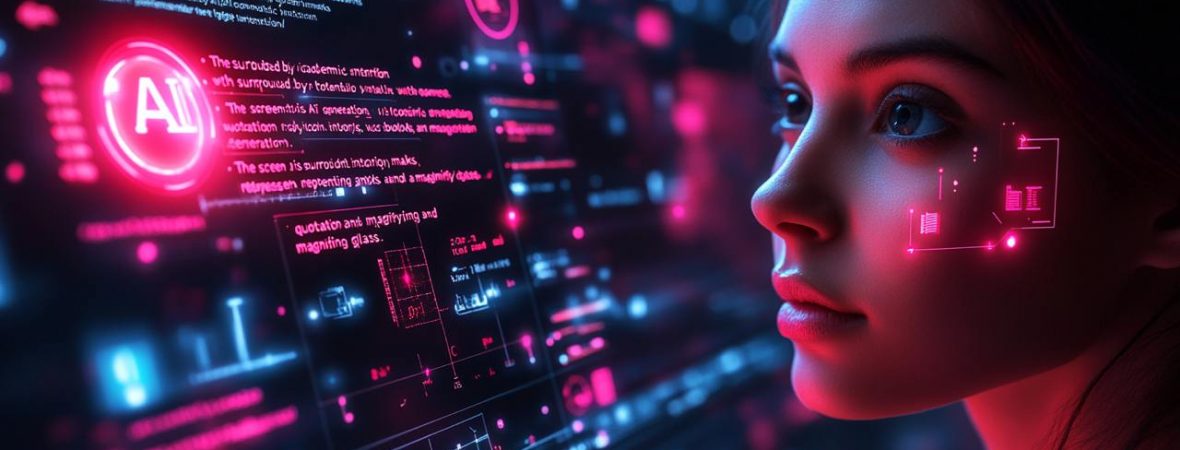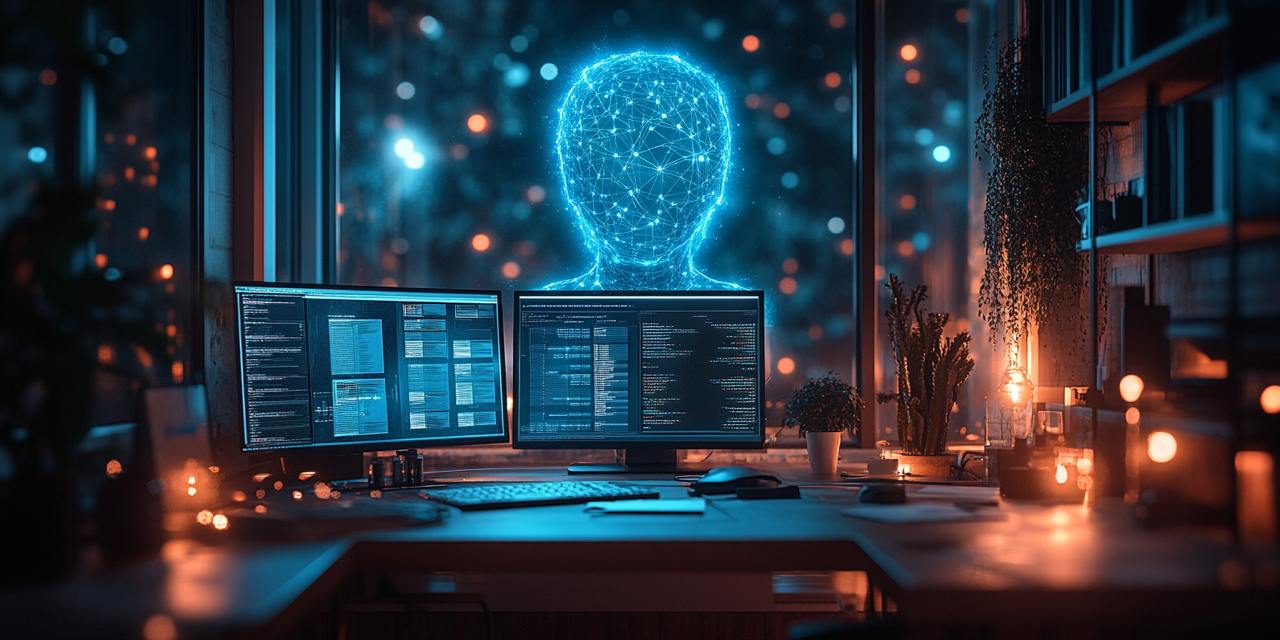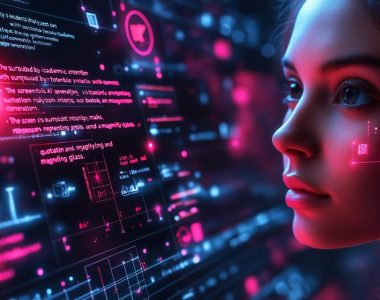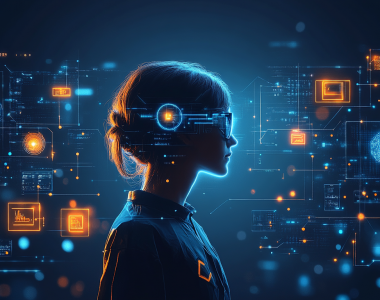
The development of digital technologies offered new opportunities to multiple spheres. One of them is content generation. With AI-generated content predicted to account for over 20% of all online text by 2030, the race to detect it is more relevant than ever.
With the rise of AI capabilities, some predict that ChatGPT will replace search engines and social networks. A further expansion will lead to changes on the labor market. AI tools will make many professions unnecessary and useless. Others even believe that AI will consider humans as a potential threat and will eventually turn against them.
However, let’s concentrate on the issue if it’s possible to detect who writes text — AI or humans? We’re going to delve into this issue in the article and answer the question “How do AI checkers work?”.
Basics of How AI Detectors Work
The introduction of artificial capabilities led to an influx of AI-generated content to the Web. AI is an advanced software that uses high-quality algorithms and search engines to look for information and generate content. Basically, AI detectors use large databases with dozens of text fragments. They analyze them, highlight features and differences, and determine similarities. In its work, such software uses the following principles:
- Machine learning. Artificial intelligence analyzes lots of human and AI-generated texts and creates recognition patterns. Based on the obtained information, algorithms use a predictive analysis for successful measurement of perplexity.
- Natural language processing. AI is good for dry information presentation, but it fails to create vivid and clear articles with a deep meaning. The analysis of natural texts gauges the syntax and sense of analyzed texts.
- Classifiers. Such tools divide text into groups according to certain parameters, based on the patterns they have learned.
- Embeddings. These tools use words as vectors that help define semantic coherence.
Finally, AI detectors focus on word frequency analysis, syntactic patterns, and sentence structures. Focus on these aspects helps create a comprehensive review of a document and conclude whether an analyzed text is human or not.
How AI Detectors Identify AI Content?
Next, let’s move on to the second issue and provide an explanation to the question “How do AI detectors detect AI?” When analyzing text, the software pays attention to two main factors — perplexity and burstiness. The first one analyzes text based on its predictivity. If the text is less predictable with a deep meaning, it’s identified as “human”. As for the second indicator, human articles usually include the alteration of short and long patterns, sentences, and phrases. AI-generated content is usually less variable in syntax. Moreover, AI-generated content features contextual mistakes and persistent patterns.
“The moon’s gravitational pull causes tides to rise and fall on Earth.”
“Earth’s tides are a result of the moon’s gravitational pull, which causes periodic rising and falling of water levels.”
While both sentences convey the same idea, the second one might be flagged as AI-generated due to its overly formal tone, redundant phrasing, and a “bookish” structure — common traits of machine-generated text.
Want to see how this works in practice? You can check for AI writing by analyzing different texts yourself.

Benefits and Limitations of AI Detection Technologies
Upon answering the question “Do AI detectors actually work?”, it’s necessary to keep in mind its pros and cons. The main strengths include:
- Fast content checking. AI detectors cope with checks in a matter of a minute or so. Users get an accurate result in several seconds. Advanced algorithms identify all features and create an unbiased assessment of a document.
- Maintaining academic integrity. AI detection tools help universities and educators ensure the authenticity of student work. By identifying machine-generated content, they safeguard the value of academic achievements and promote honest practices.
- Enhancing accountability. By detecting AI usage in various sectors (e.g., journalism, research, or marketing), these technologies help organizations enforce ethical standards and transparency.
- Combatting misinformation. With AI being used to generate fake news or misleading content, detectors play a vital role in maintaining the credibility of online information.
- Adaptability across industries. From education to legal documentation, AI detection tools can be customized to suit the unique requirements of different industries.
Limitations of AI Detection Technologies
- False positives and negatives. AI detectors are not infallible. In some cases, human-authored text might be flagged as AI-generated (false positive), or machine-written text might pass as human (false negative).
- Rapid evolution of AI models. Generative AI systems like GPT are evolving quickly, sometimes outpacing the ability of detectors to recognize new patterns or techniques. This creates a constant game of “catch-up”.
- Context misinterpretation. Detectors focus on patterns and structures but can misinterpret context, leading to errors. For example, technical or academic writing by humans may resemble AI-generated content due to its formal tone.
- Dependence on training data. The effectiveness of AI detectors depends heavily on the quality and diversity of the data they’re trained on. A lack of diverse data may limit their ability to detect certain nuances.
The Future of AI Detection Tools
When discussing the issue of “How do AI content detectors work?”, let’s briefly mention the future prospects of AI checkers. As the share of text content rises regularly, the need for such software will increase as well. Modern software engineers try to integrate new features and algorithms to improve the quality and accuracy of AI detectors. For instance, machine learning is integrated to make check results more accurate and correct.
Another important step is to the ability to adapt these tools to handle new AI models. As new algorithms are developed, it’s important to customize tools to identify new patterns. As new technologies arise, software must be ready to respond to them and ready to detect all sorts of AI expressions.
The result of AI detection checks directly affects the reputation, trust, and income of users. Depending on the target audience, AI-generated content can ruin the reputation of students before professors and teachers, reduce sales and cause financial losses for businesses, spoil the status and trust of a journalist, etc. The introduction of AI detectors helps specialists keep their reputations and create high-quality content.
Now, you realize how AI writing is detected. Note that the software comes as a useful tool not only for copywriters but specialists in different domains. Such systems are helpful in education, journalism, and business. They help improve the quality of written content and ensure its smooth and easy perception by readers. Thus, there is a need for continued development of reliable detection technologies and the improvement of existing algorithms.








